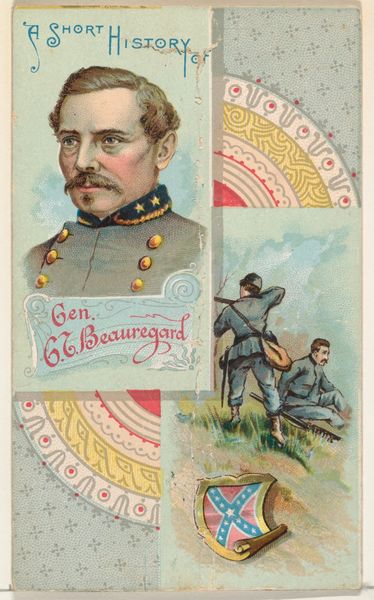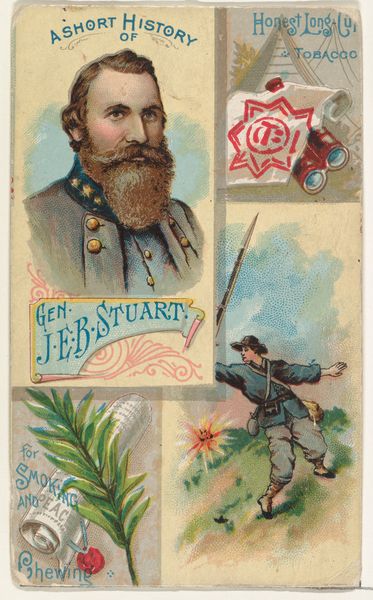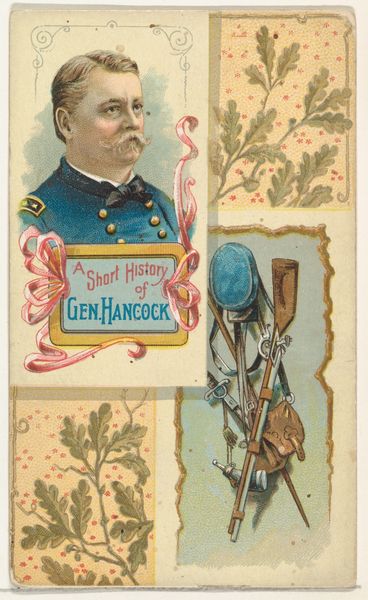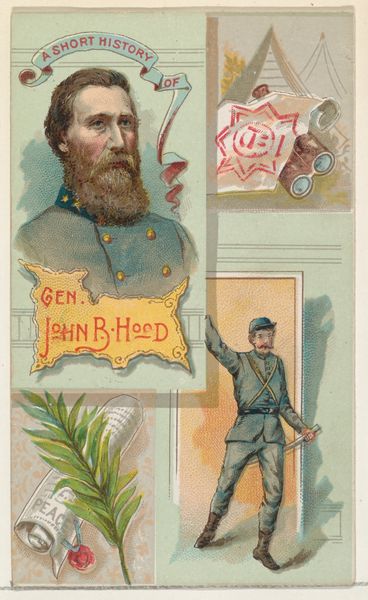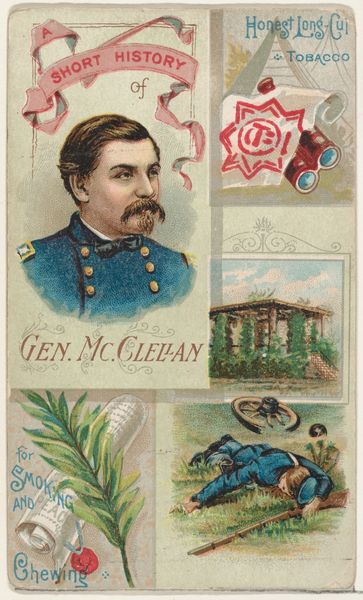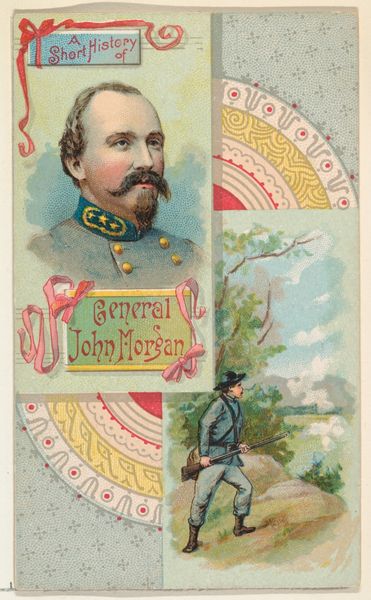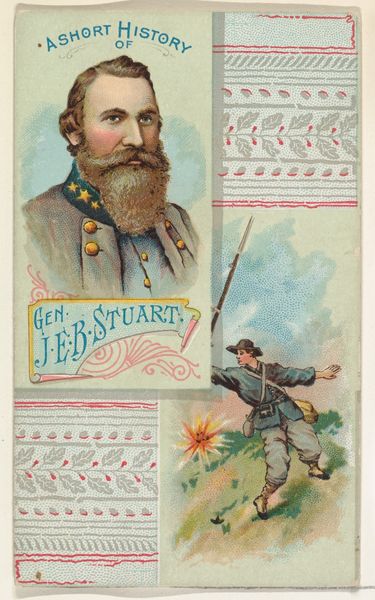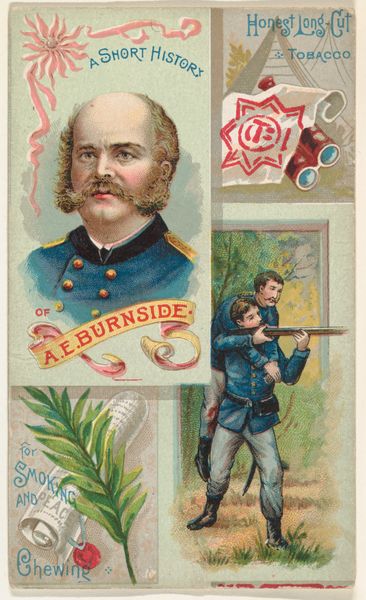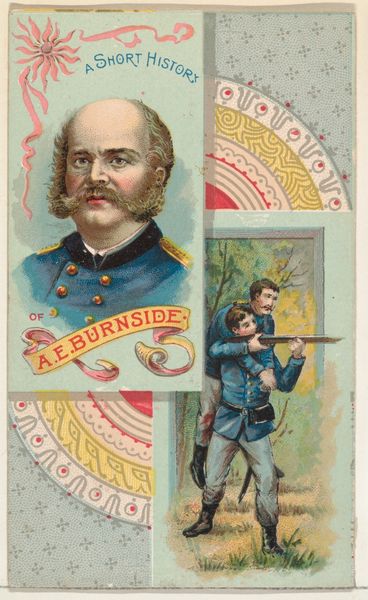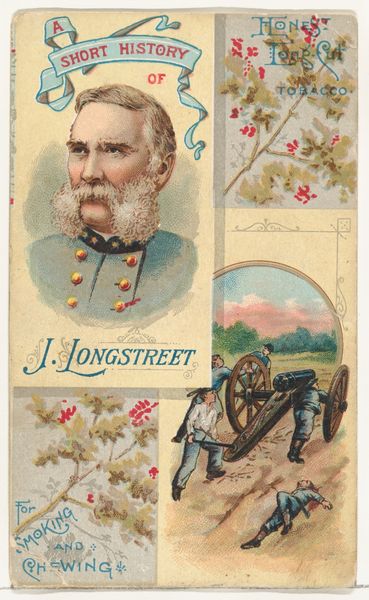
A Short History of General G. T. Beauregard, from the Histories of Generals series (N114) issued by W. Duke, Sons & Co. to promote Honest Long Cut Smoking and Chewing Tobacco 1888
0:00
0:00
drawing, coloured-pencil, lithograph, print
#
portrait
#
drawing
#
coloured-pencil
#
water colours
#
lithograph
# print
#
coloured pencil
#
naive art
#
history-painting
Dimensions: Sheet: 4 3/16 × 2 1/2 in. (10.7 × 6.4 cm)
Copyright: Public Domain
Editor: This is "A Short History of General G. T. Beauregard," a lithograph print from 1888 by W. Duke, Sons & Co. It's part of a series used to advertise tobacco products, and I’m struck by how it blends the image of a Confederate general with such blatant commercialism. What layers do you see at play here? Curator: This piece exists within a complex historical and cultural landscape. The commercial use of Confederate imagery long after the Civil War speaks volumes about the enduring legacy of the "Lost Cause" narrative and its appeal to a specific demographic. What does it mean to literally consume an image associated with such fraught identity and politics? Editor: So, you're suggesting it normalizes and perhaps even celebrates a problematic past? The connection to tobacco adds another layer, right? Curator: Precisely. Think about the political economy of tobacco, deeply intertwined with slavery and the exploitation of labor, particularly in the South. This advertisement actively obscures that history by romanticizing Confederate figures. How might we critically examine the artistic choices here – the idyllic battle scene, the softened portrait – in light of that reality? Editor: I hadn’t thought about it in terms of erasure. I was focused on the strangeness of the combination, but now I see the erasure of enslaved people is very pointed. Curator: Exactly! What does this erasure enable? Who is this image meant to appeal to, and what ideology does it reinforce? Editor: This really opens my eyes to how advertising can be a tool for shaping historical narratives, not just selling products. I initially saw just an oddity, now I see a disturbing cultural artifact. Curator: And that understanding, that shift in perspective, is exactly what critical engagement with art can achieve. The art here prompts dialogue around history, power, and representation.
Comments
No comments
Be the first to comment and join the conversation on the ultimate creative platform.
